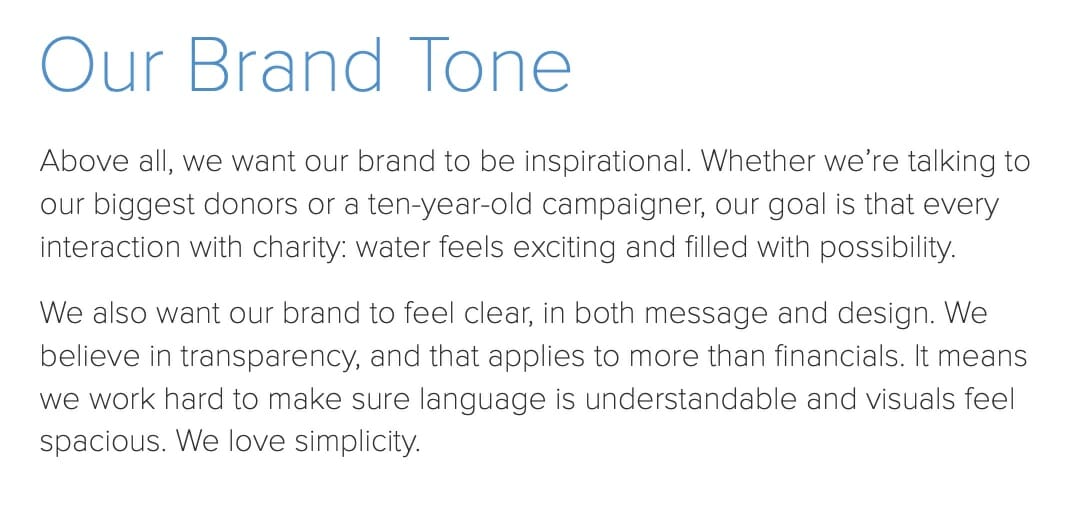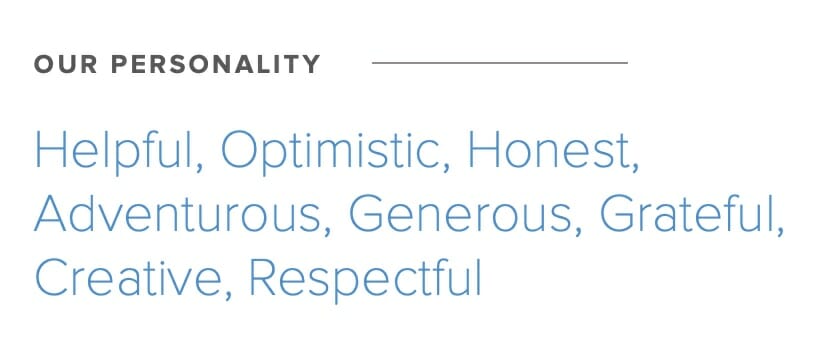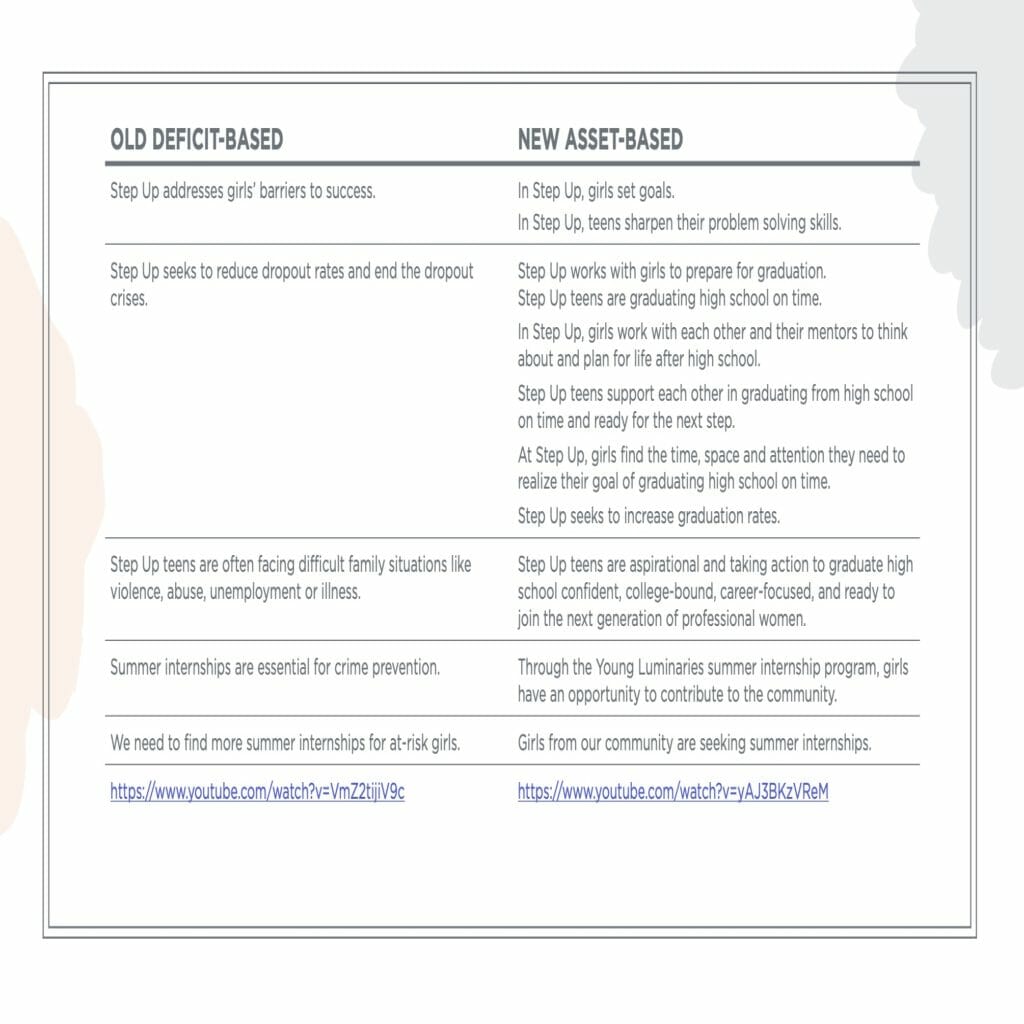Your nonprofit brand is a powerful tool that can help your organization build awareness, increase credibility among your stakeholders, raise more money for your cause, and most importantly, move your mission forward. However, for too long, the sector has not invested enough in building brands the same way corporate counterparts have.
With goals like ending hunger, expanding educational opportunities and combating the environmental impacts of climate change this mindset has to change – it’s time to elevate our nonprofit brands. To help you and your organization do just that, in this post, we’ll cover what a nonprofit brand is, why it’s important and how you can build and maintain a cohesive brand at your nonprofit.
What is a nonprofit brand?
In 2012, the Stanford Social Innovation Review published “The Role of Brand in the Nonprofit Sector,” which defined a brand in the following way:
A brand is more than a visual identity: the name, logo, and graphic design used by an organization. A brand is a psychological construct held in the minds of all those aware of the branded product, person, organization, or movement.
The article by Nathalie Kylander and Christopher Stone noted at the time many nonprofits were shifting to view their brands beyond the context of fundraising and leveraging it more strategically “to create greater social impact and tighter organizational cohesion.” It also details models nonprofits can use to build brands that contribute to impact, mission, values and culture. For nonprofit leaders, it’s worth a read because the overall principle that brand can and should drive mission still holds true today.
Why is your brand important?
Your nonprofit brand can serve to differentiate your nonprofit from others that provide similar programs and services. And, a strong nonprofit brand becomes what your beneficiaries, donors, funders and community think of when they think about your organization. Your brand can be a logo they recognize or a name that sticks in their memory, but it can also be the feeling they have when they walk into your space or when they receive a direct mail piece from your nonprofit. The level of awareness people have about your brand can increase your credibility as an organization and promote trust within the community.
Ultimately, your ability to leverage your brand to build relationships and awareness can lead to deeper engagement with your organization among stakeholders, helping you to advance your mission. Before we talk about how this is accomplished, we’ll explore the elements of a brand.
What are the elements of a brand?
Your brand is made up of both tangible and intangible elements. Some of your tangible brand elements include your:
- Reason for Being: a statement that articulates the unique impact your organization makes that no other organization can make in quite the same way

- Visual identity: all of the imagery and graphical information that express your brand, this includes your:
- Logo
- Brand colors
- Fonts (typography)
- Photography and other imagery

- Tagline: a succinct articulation of your brand message
- Key messages: the main points you want your audiences to understand and remember about your nonprofit
- Brand tone: the emotion you want your brand to convey through communication

Brand personality: human characteristics attributed to your brand

Intangible brand elements are the perceptions and feelings your stakeholders have related to your brand (which can be supported and driven by your tangible brand elements).
How do you develop a strong brand?
1) Involve your stakeholders
There are still too many nonprofit brand conversations and strategies that are developed behind closed doors, without important inputs from nonprofit staff, donors, funders, board members, community partners, and most importantly, beneficiaries. So how can we expect to build brand ambassadors or champions? How can we know we’re representing people in ways that feel true and empowering to them? How can we understand perceptions and misperceptions about our organizations? We can’t.
Developing a brand that you can leverage to build trust, increase awareness, build capacity and cohesion requires involving your stakeholders in the process. It starts with the Shared Power StrategyTM philosophy, which says that we must redistribute the power to shape our nonprofit’s strategies to our stakeholders, especially the people and communities we serve in order to build more effective, inclusive strategies, including those that shape our brands.
This can be done formally, through brand perception studies, focus groups for testing and stakeholder conversations. It can also be done informally by tracking things like sentiment in media articles and social media posts.
The idea of sharing power and co-creating our nonprofit brands needs to carry on following brand development to support your organization’s stakeholders in becoming brand ambassadors. This means empowering your team members and diverse range of stakeholders with the training, tools (like this Bill & Melinda Gates Foundation Grantee Communications Guide), support and encouragement they need to represent your organization in ways that are consistent but also personal to them.
2) Identify your differentiators
In addition to hearing from your stakeholders about your brand, you’ll want to identify around five other organizations in your sub sector that you can compare and contrast against to identify what truly makes your nonprofit unique.
You can review websites, marketing and fundraising materials, annual reports, social media accounts, media coverage, etc. and use this information to get a feel for their brand elements and brand perceptions and to identify areas where you can differentiate. Then, you can develop your organization’s Reason for Being to bring your unique impact to the forefront, and use it as the foundation for developing things like your key messages, brand tone and brand personality.
3) Understand and articulate your greatest strengths
Hearing from your stakeholders and identifying your differentiators will ultimately help you understand what your greatest strengths are as an organization, and these are the things you’ll want to bring to the forefront of your brand.
4) Build the tools you’ll need for internal and external brand consistency and cohesion
Once you have your brand elements in place, you’ll want to develop the tools and resources all of your stakeholders need to maintain brand consistency and cohesion, such as:
- Brand guidelines: standards for how your brand is represented. Brand guidelines outline how logos, colors and fonts should be used, they provide guidance on the types of imagery that best represent your work. Often included here are your nonprofit’s key messages, along with your brand tone and brand personality.
- Strength-based messaging guide: provides guidance and examples for ensuring your brand’s communication is true and empowering to the people and communities your nonprofit serves

- Storytelling guidelines: outlines best practices for engaging stakeholders to share your organization’s story
- Race, ethnicity and gender communication guidelines: details strategic decisions and best practices about race, ethnicity and gender communications
- Personas: personified definitions that detail the demographics and psychographics of your nonprofit’s most important stakeholders
- Journey maps: detailed maps that outline the experiences of your stakeholders with your organization
Brand guidelines examples to inspire yours
If you’re ready to take your brand to the next level, check out these brand style guides for inspiration:
YMCA (and the YMCA Messaging Guide)